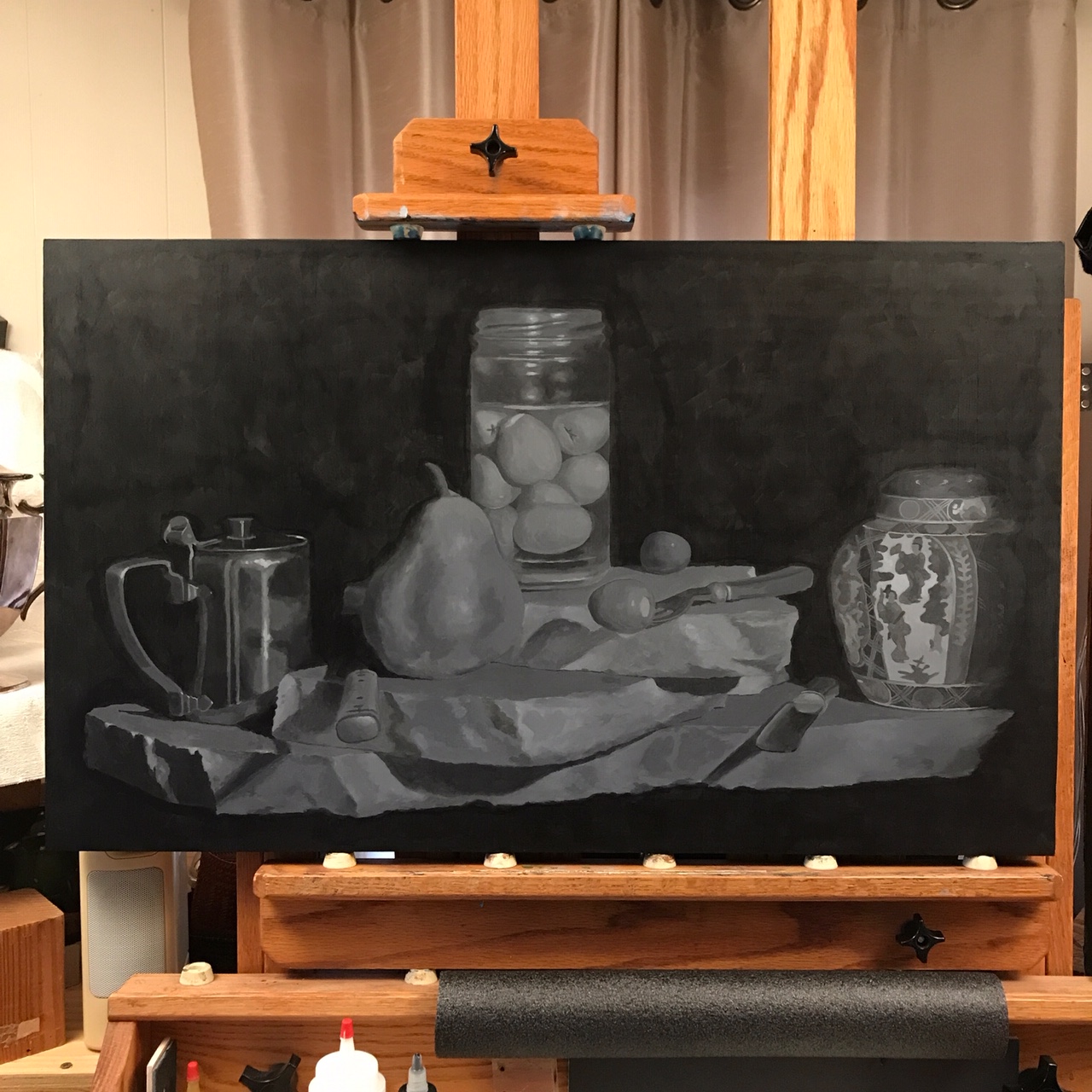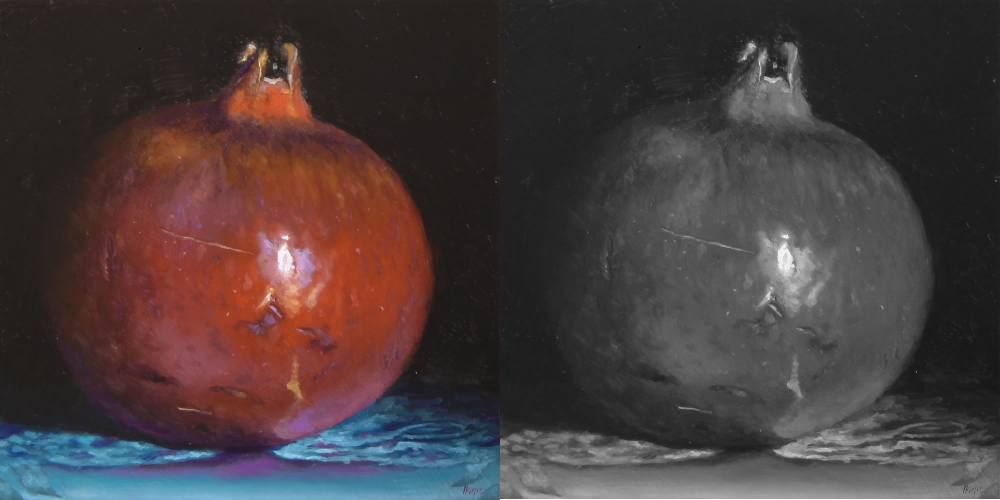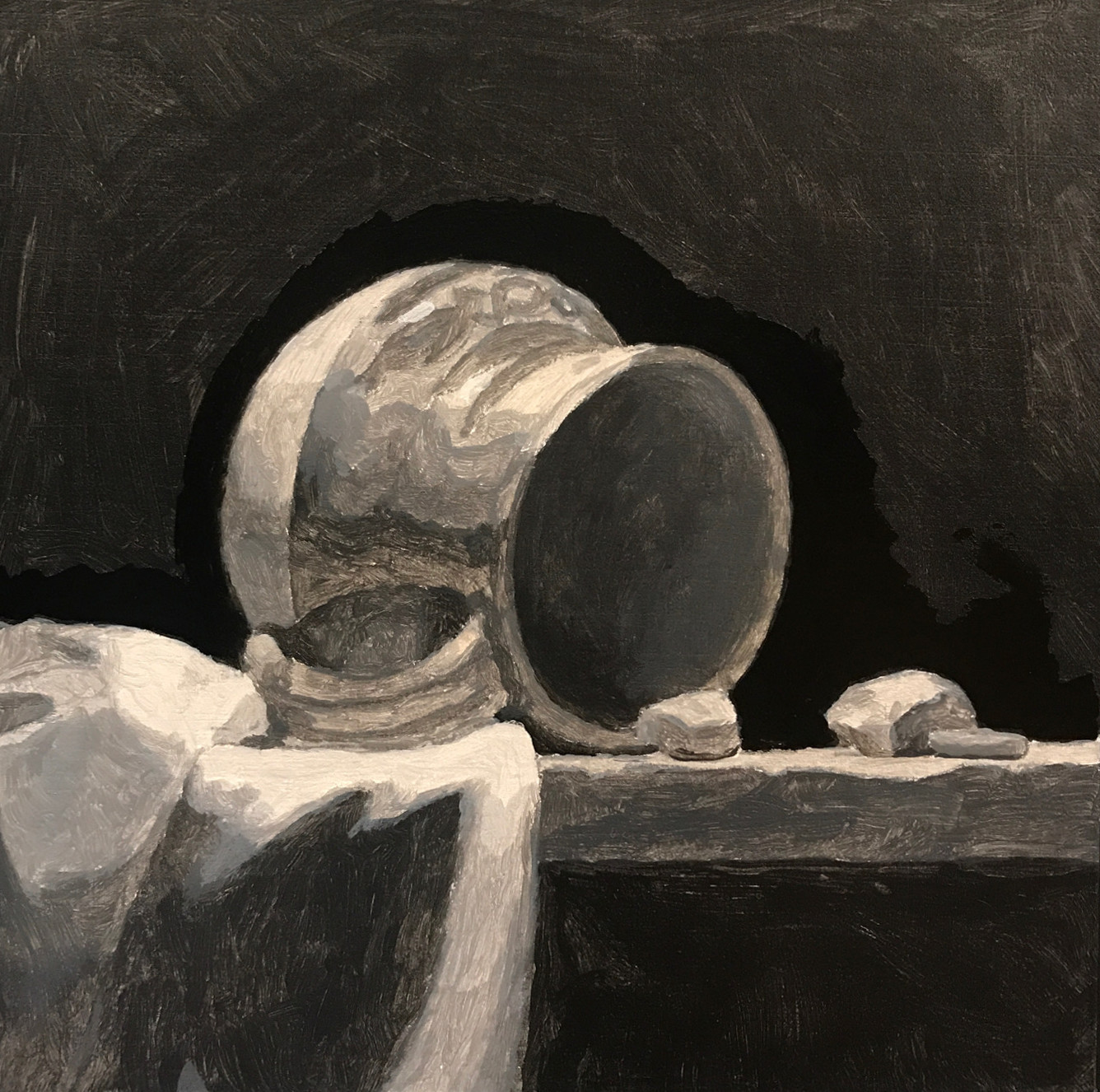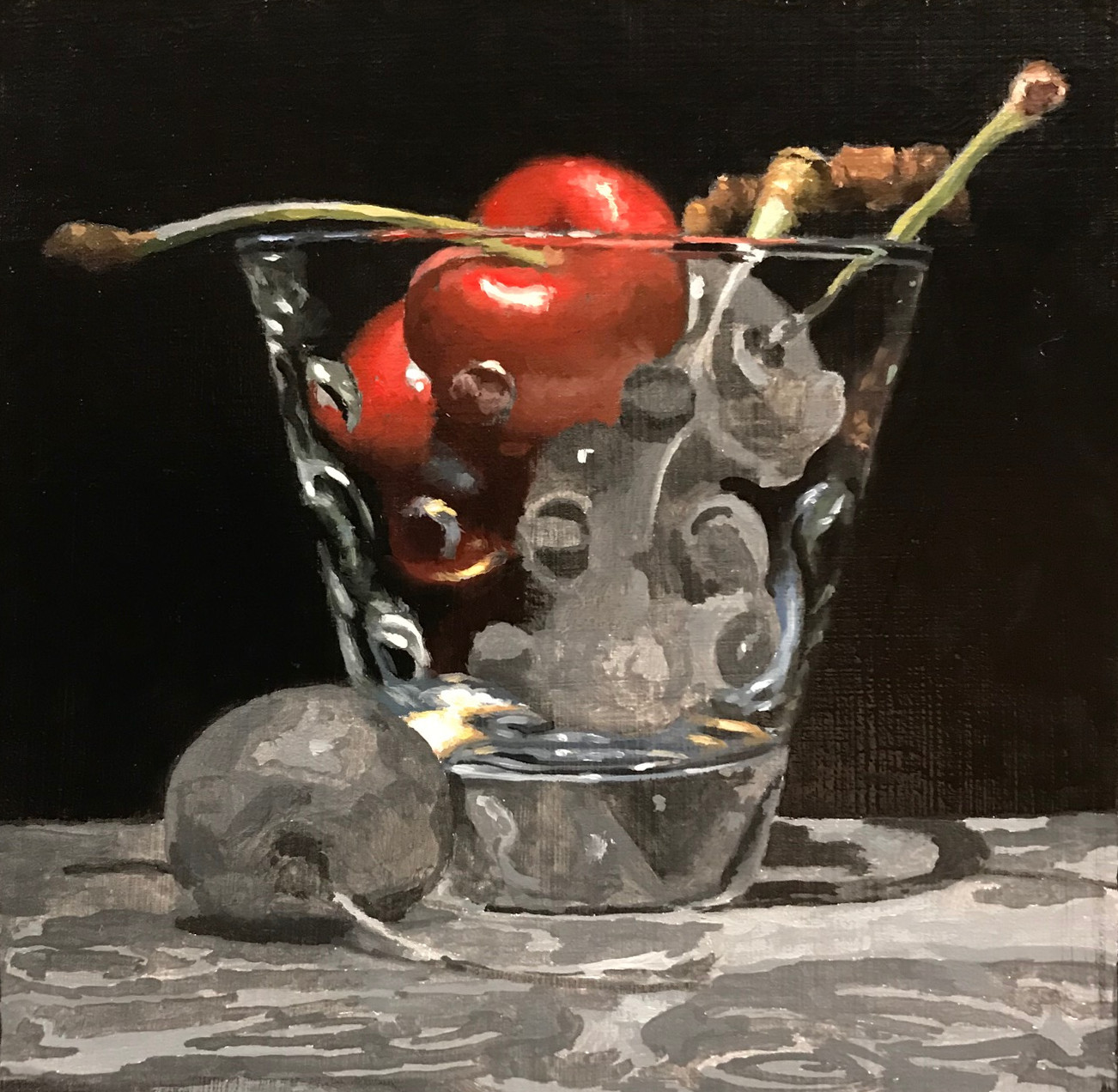The Grisaille The Simplest Form of Underpainting

Underpaintings are monochromatic versions of the painting, over which the final color layer will eventually be applied. It’s an intermediate step in the Flemish technique (which is the basis for the process I follow), that is done after the drawing and before the color layer.
There are multiple approaches to making an underpainting. A grisaille is the simplest form, done with just black and white. Other forms include verdaccio (done with shades of green), brunaille (shades of brown), and ébauche (dulled, muted forms of the final colors). An artist working with underpaintings will choose an approach based on their own preferences and habits.
I prefer grisaille because of its simplicity, and the darks seem truer to me than the other approaches.

Painting a grisaille allows clear focus on the values (degree of light or dark) without the added complexity of color. When working with full color, it becomes easy to misjudge the actual value, particularly with intense, saturated colors.
It would be easy to look at the intense red of the pomegranate above and assume it was quite bright. If I were to start painting it with full color, I might make the mistake of painting it with too high of a value. With the color filtered out, however, it becomes clear that the red is fairly dark – all middle values except for a few highlights. By focusing only on value at this stage, it becomes easier to make them accurate.

A grisaille provides solid modeling of the 3 dimensional forms in opaque paint.
This is important because many beautiful colors are transparent to some degree. Without an underpainting, it’s difficult to convincingly give the illusion of a full-bodied object with this transparent paint – the plain background would simply show through and render the object flat.
However, with the form fully painted in black and white, any transparent color could then be quickly glazed on top of it. This creates beautiful visual effects and deep, rich colors.

Finally, the grisaille is a dress rehearsal for the final work.
When working on it, hours – sometimes days – are spent studying the model and becoming intimately familiar with it. This allows a richer understanding of the subject than if I simply started painting it.
Every part of the picture has already been thought about to some degree, and the final color layer is just a continuation of work already well in progress.
One potential weakness of the grisaille is that it can lead to less vivid colors in the final painting. Mixtures of pure black and white create neutral grays. When the final layer is applied thinly enough, some of this gray will show through and create a duller appearance. Small amounts of either red or blue can be mixed with the black to shift the grisaille in warmer or cooler directions, as desired.
If you enjoyed this post, you may wish to read a detailed description of my process.
Lois Schock
February 5, 2018 @ 11:41 pm
I’m in awe of your talents! Do you paint larger paintings i.e. 24″ X 24″? I’ve admired some of the paintings done by Marshall Henricks. In particular, large jugs. Then I discovered you! Jeffrey I’ve traveled through much of your artwork, writings and studios. You’re a delight to behold!
Jeffrey Hayes
February 6, 2018 @ 2:07 pm
Thank you Lois! Yes, I do try to do at least a few larger pieces a year – I completed a 24×30 commissioned painting in December, and as part of my project to do one larger (for me) painting each week in 2018, I do plan to try doing a few of those dimensions. I know and admire Marshall’s work – we have a gallery in common (Powers Gallery in Acton MA)
Collette
February 6, 2018 @ 8:00 am
Amazing work Jeffrey. Thank you for the write up above, it gives me an extra appreciation. I love your style.
Jeffrey Hayes
February 6, 2018 @ 2:08 pm
Thank you Collette – I’m glad you enjoyed reading it!
Manon
February 6, 2018 @ 11:17 pm
Hello M.JEFFREY
I am admiring of your work ….Every time I read you I’m learning something new and you thank you for it.A question; for fast drying do you work with the liquin.
Jeffrey Hayes
February 10, 2018 @ 2:26 am
Thanks Manon – I’m glad you find it helpful!
I do not like Liquin at all. For fast drying, I use Black Oil, but only for the underpainting.
Rick M
February 13, 2018 @ 5:10 pm
Where do you buy black oil, I’ve done quite a few searches and cannot seem to find it online? Galkyd seems to work for drying for me overnight but it sounds like black oil sets harder and I wouldn’t mind trying it out.
Jeffrey Hayes
February 16, 2018 @ 10:02 pm
Natural Pigments offers it: https://www.naturalpigments.com/dark-drying-oil-black-oil.html
Jim Serrett
February 19, 2018 @ 10:19 pm
Jeff if you use Black oil in the underpainting, I am curious what medium are you using in next layers.
Jeffrey Hayes
February 20, 2018 @ 2:43 pm
Jim: For the upper layers I generally use a 4:1:1 mixture of turpentine, linseed, and stand oil. I also use it very sparingly – a few drops mixed into the paint nuts to get the right consistency. That’s almost always enough, though sometimes if needed I’ll put a few additional drops of linseed oil in. For any further thinning I just use OMS.
Jim Serrett
February 25, 2018 @ 4:47 pm
Thanks Jeff, I really like the color saturation and surface quality of your paintings, your objects have this great sense of weight to them. I have got to see one in the real. Thanks for sharing all of your work and blogging your process.
Rosie Foshee
March 5, 2019 @ 2:29 am
I believe this is the best article I have read about the grisaille technique. You have explained all the why’s where other articles have not covered it all, and the process. Your works of art are beautiful, a type of painting that will hang in one’s thoughts, and that means you have painted some true works of art, that will be handed down throughout the ages, and cherished.
Jeffrey Hayes
March 5, 2019 @ 12:34 pm
Thanks Rosie – I’m glad the article was helpful!